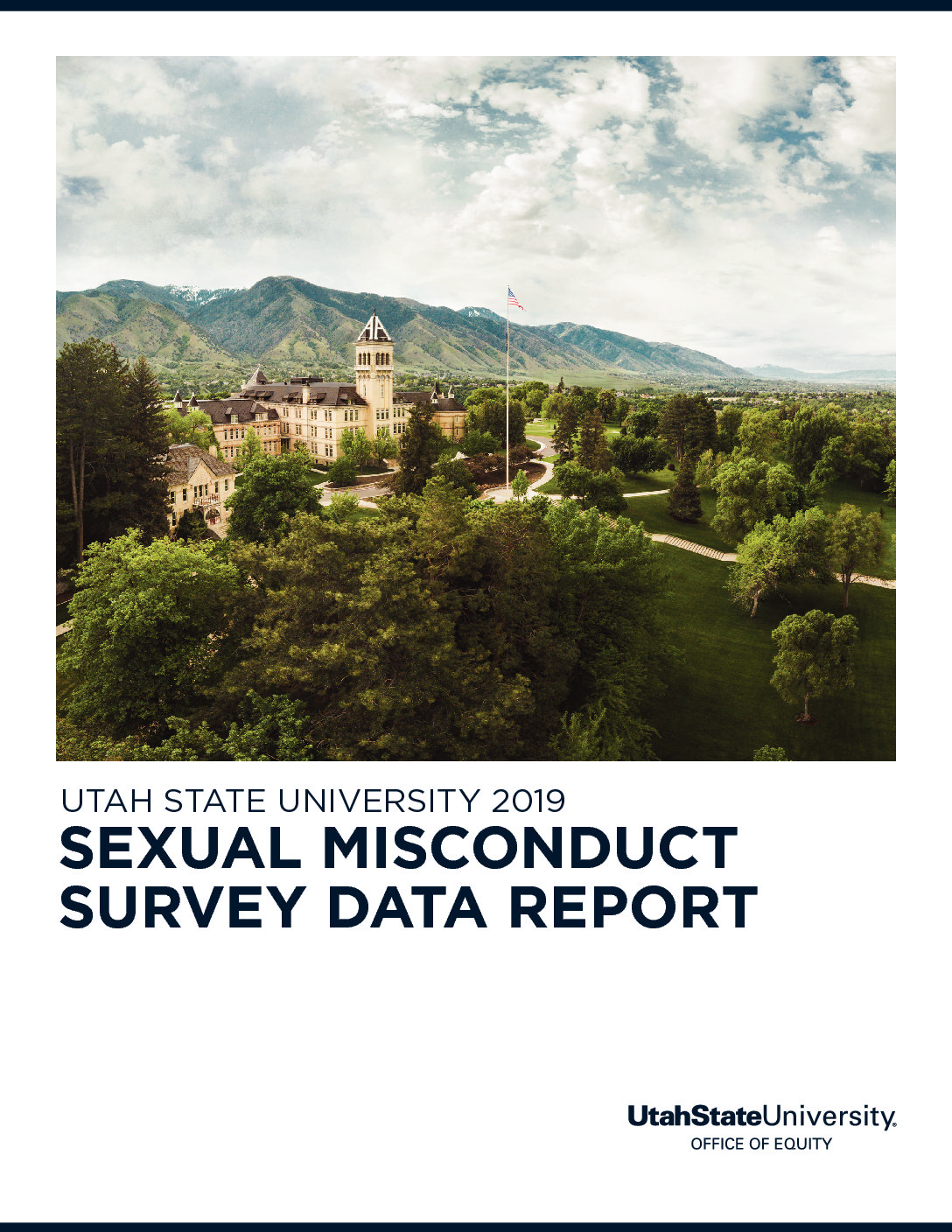More than one-fourth of USU students say they’ve experienced sexual harassment at USU
Utah State University released the results to their 2019 survey on sexual misconduct, the second of this type conducted by USU following a survey in 2017.
According to Emmalee Fishburn, USU Prevention Specialist in the Office of Equity, the 2019 survey was designed to collect key data that USU was unable to collect through the 2017 survey.
Some of the key results of the 2019 survey include data on sexual harassment and gender discrimination. According to Fishburn, questions regarding those topics were not asked during the 2017 survey.
“We didn’t ask any questions related to sexual harassment, or gender based discrimination or harassment. Those are actually part of the university sexual misconduct policy, so right from the get-go, I was like, ‘We need that data.’ We need to know what’s going on with our students,” Fishburn said.
According to a one page summary of the survey’s results, 27 percent of participants reported experiencing sexual harassment at USU, and 17 percent of participants said they had experienced gender-based discrimination or harassment at USU.
Fishburn said the survey is designed to discover the state of sexual misconduct not only on USU’s Logan campus but also throughout the entire USU system. According to Fishburn, the 2017 survey included many Logan campus-specific questions, which were not relevant to students at other USU campuses.
According to Fishburn, her role included looking at the 2017 survey and figuring out how to better collect data in the next survey. For the 2019 survey, Fishburn looked at all of the questions and proposed new survey questions designed to better collect data.
“It really is intended to be an aggregate of the entire USU system, rather than a representation of just Logan campus specifically,” Fishburn said. “That data wasn’t super helpful for us because it would have been skewed to a certain extent in the sense that people on other campuses aren’t accessing [Logan] resources, and they don’t even know what they are.”
According to the report, 23,349 students received the survey via email. 6,159 students completed the survey, resulting in a response rate of 26 percent. Fishburn said this response rate is significantly higher than other similar reports conducted at other universities.
“Sexual misconduct surveys for campuses typically have a 10 to 15 percent response rate, so it’s really awesome to see that students take [the survey] seriously,” Fishburn said. “[Students] want us to know what’s going on with them.”
However, the results for the 2019 survey are lower than the results for the 2017 survey, which had a 45 percent response rate, according to the report. Fishburn said the lower response rate could have been the result of several factors, including what Fishburn called “survey fatigue,” or a minor burnout from completing many surveys over a short period of time.
Fishburn said the 2019 survey was released at the same time as a number of other USU surveys, which possibly led to a lower rate of response. While Fishburn recognizes that even the 10 to 15 minutes it takes to complete the survey can be a major time commitment to students, Fishburn hopes students will at least take the time to review the survey’s results.
“My hope is that even if people don’t take the time to read the full report, which I understand, the one page summary still gives a lot of information about what is going on,” Fishburn said. “Now that we know there’s a need in certain areas, we can mobilize more resources, and we can make it a focal point of our efforts moving forward. Data helps, always.”

